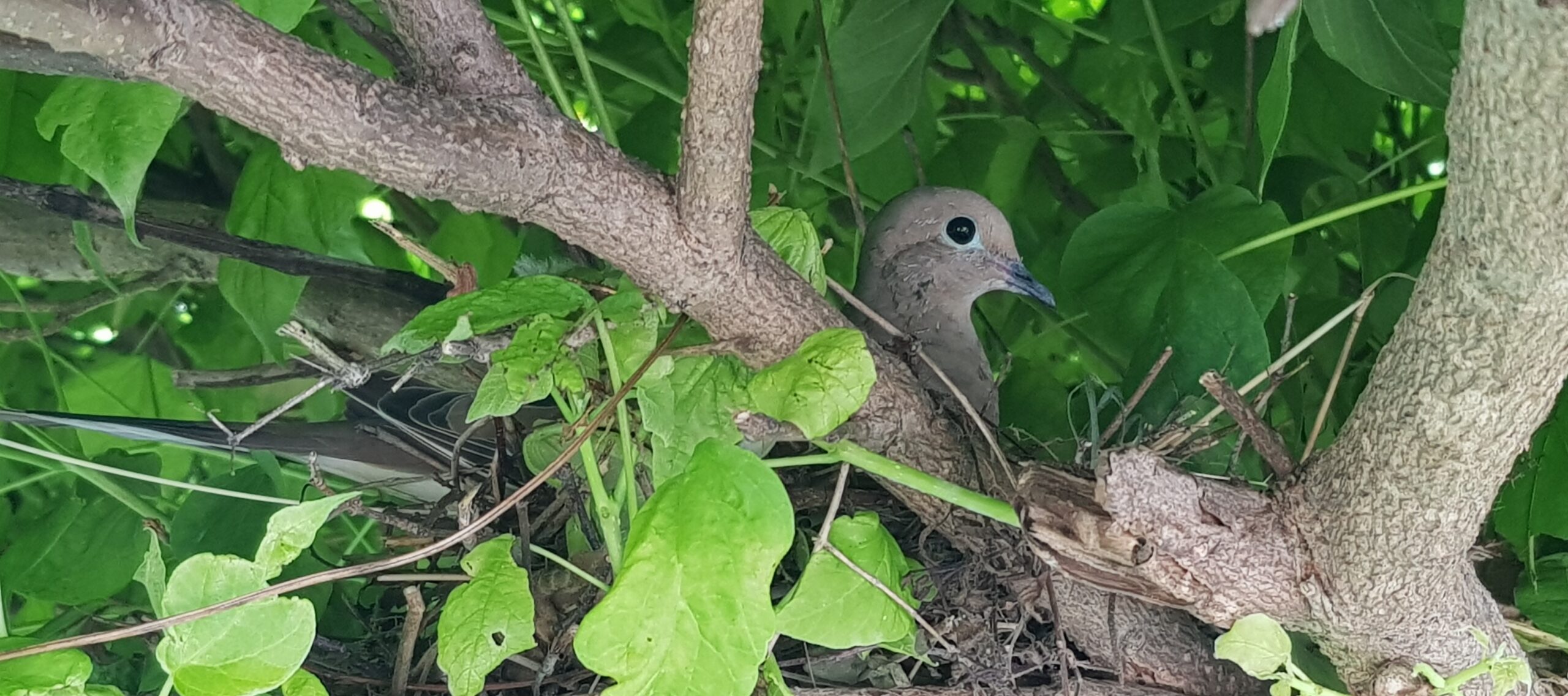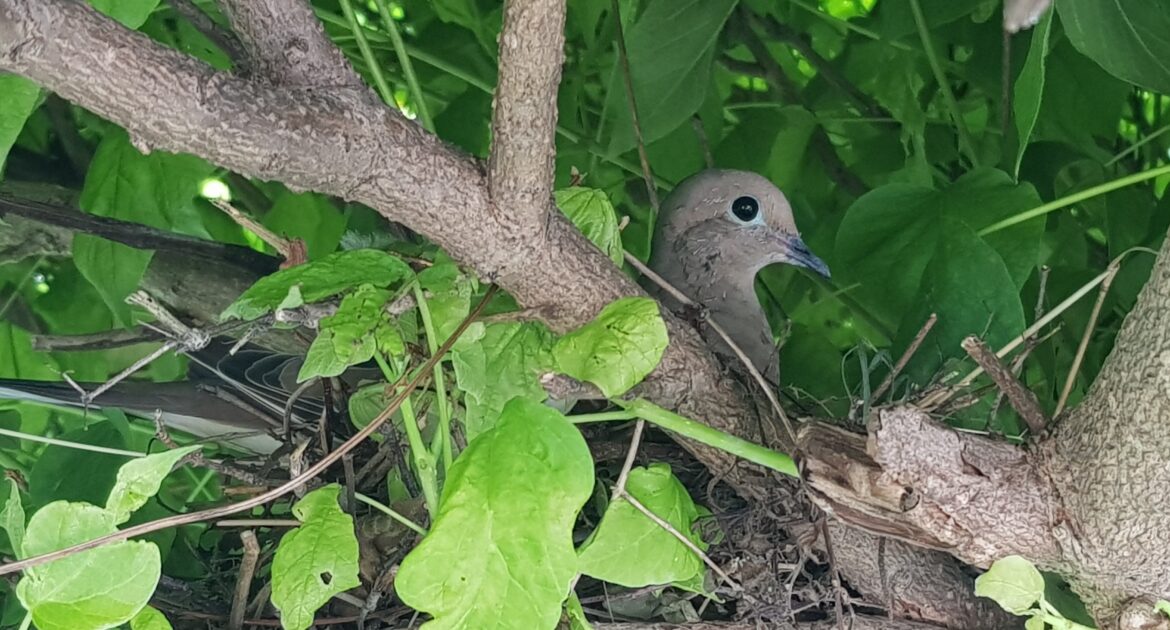If you’ve found a bird’s nest near your home, you might be wondering what to do about it. Should you leave it where it is? Should you move it? Many people face this dilemma, especially during the spring and summer when birds are busy building their homes and raising their young. The truth is, moving a bird’s nest is not as simple as it may seem. Before you act, it’s important to consider bird nest safety tips, understand the challenges of relocating bird nests, and get the right advice to avoid causing harm.
Moving bird nests advice often starts with one main takeaway: in most cases, it’s best to leave bird nests alone. Birds are federally protected, meaning it’s illegal to tamper with or remove active nests of most species without proper authorization. Birds invest a lot of energy into building their nests, and relocating them could harm their chances of survival.
At Skedaddle Humane Wildlife Control in Niagara, we know how important it is to take a humane and careful approach to wildlife issues—including nests near your home. That’s why we focus on expert advice and safe solutions if a nest is truly causing significant concerns.
Why You Should Think Twice About Moving a Bird’s Nest
The first thing to understand is that a bird’s nest isn’t just a temporary home; it’s a vital part of a bird’s life cycle. Once eggs are laid, parents rely on that nest as a base to feed their young and protect them from predators. Even a small disturbance to a nest can cause birds to abandon it, leaving their young ones vulnerable.
If you’re considering moving a bird’s nest because it seems too close to your home, take a moment to reflect on why it’s there. Birds generally choose spots that feel safe and offer some protection. Whether it’s under an eavestrough, on a balcony, or in a hedge, they’ve carefully selected that location. Moving it could disorient the animals and jeopardize their safety. Most of the time, nests are only occupied for a few weeks, so if possible, try to avoid getting involved until the birds have moved on.
When It’s Okay to Intervene
While the general advice is to leave nests undisturbed, there are some situations where action may be needed. For example, if a nest poses a direct safety risk to people, such as being located near a door or vent, or if it’s blocking critical equipment. However, even then, caution is key.
- Active Nests: If eggs are present, removing or relocating the nest is not permitted without approval from wildlife authorities. Active nests are highly protected under Canadian law for many bird species.
- Safety Concerns: If a nest is sitting in a hazardous location and requires intervention, it’s critical to consult professionals like us at Skedaddle, who understand how to handle the situation safely.
- Long-Term Issues: A large or messy nest that can attract pests or damage property might be a good reason to look into professional help.
Tips for Coexisting With Bird Nests
Many bird nests don’t cause issues and can even be fascinating to watch. Whether it’s robins, sparrows, or other local species, here are some tips to keep both the birds and your home safe:
Keep Distance
Avoid the temptation to get too close to the nest. Humans coming near can stress the birds and possibly make them abandon their eggs or chicks. It’s best to stay at least a few metres away and watch quietly from a distance. If you have kids or pets, make sure they also keep away to give the birds the space they need to feel safe.
Use Barriers
If birds tend to pick inconvenient spots to nest, like light fixtures or ledges near your door, you can stop this by putting up mesh or netting before the nesting season begins. These barriers make it harder for birds to settle in areas where they could create problems. Just remember to use materials that won’t harm the birds and install them in a way that still allows birds to nest safely elsewhere.
Regular Inspections
Check areas like your vents, chimneys, and gutters before nesting season to make sure birds can’t build nests in dangerous or inconvenient spots. Look for gaps or openings where a bird might sneak in and make a nest. Sealing these off early with proper materials like vent covers or screens can save you from bigger issues down the road.
Provide Alternatives
You can give birds a better option by putting up birdhouses in safe, quiet spots in your yard. Make sure the birdhouses are away from busy areas like doors or windows, where birds might be disturbed. This way, birds will be less likely to nest too close to your home, and you still get the joy of watching them without any problems.
These small adjustments can help you coexist with birds without needing to resort to moving their nests.
The Role of Skedaddle Humane Wildlife Control
If you’re dealing with a bird’s nest near your home that’s causing problems, we know it can be a tricky situation to handle on your own. At Skedaddle Humane Wildlife Control, we focus on humane and effective strategies that respect both the birds and your living space. One of our key solutions for wildlife control is the use of one-way doors. While these are primarily used for larger animals, the same humane approach drives how we handle bird-related concerns.
By calling us, you’ll avoid taking risks with improper nest removal or handling. Our team will assess your home, provide moving bird nests advice tailored to your situation, and ensure safety tips are followed. It’s our priority to protect wildlife while resolving the challenges nests might create around your home.
What Happens After the Birds Leave?
Once a nest is no longer active and the birds have moved on, it’s a good idea to take steps to prevent future nesting in the same location. Here are a few things you can do:
- Thorough Cleanup: Remove the old nest and dispose of it properly. Birds often return to the same spots year after year, so clearing away old nests and associated debris helps deter repeat use.
- Seal Entry Points: If birds nested inside a vent, chimney, or other opening, take the opportunity to seal these spots with appropriate materials.
- Install Deterrents: Using visual or physical deterrents like shiny objects or bird spikes (installed in non-harmful ways) can discourage birds from nesting where you don’t want them.
We can assist with this process ensures that your home remains protected without harming the animals.
Why Choosing Experts Matters
Handling bird nests or any wildlife issue can quickly become complicated, especially with rules about nesting birds in place. It’s best to avoid DIY fixes that could unintentionally cause harm to the birds or make the situation worse.
With our team at Skedaddle Humane Wildlife Control in Niagara, you’re not only relying on experts to handle wildlife, but you’re also ensuring the safety of your home and the birds. We combine years of experience with compassion for animals, using proven methods to meet everyone’s needs. Whether it’s advice on relocating bird nests or creating long-term prevention solutions, we’re here to help.
Have you got a bird nest that’s causing trouble around your home? Request an estimate to learn more about how we can assist. We make sure every solution is humane, effective, and tailored to your unique situation. Together, we can protect your home while keeping wildlife safe.




